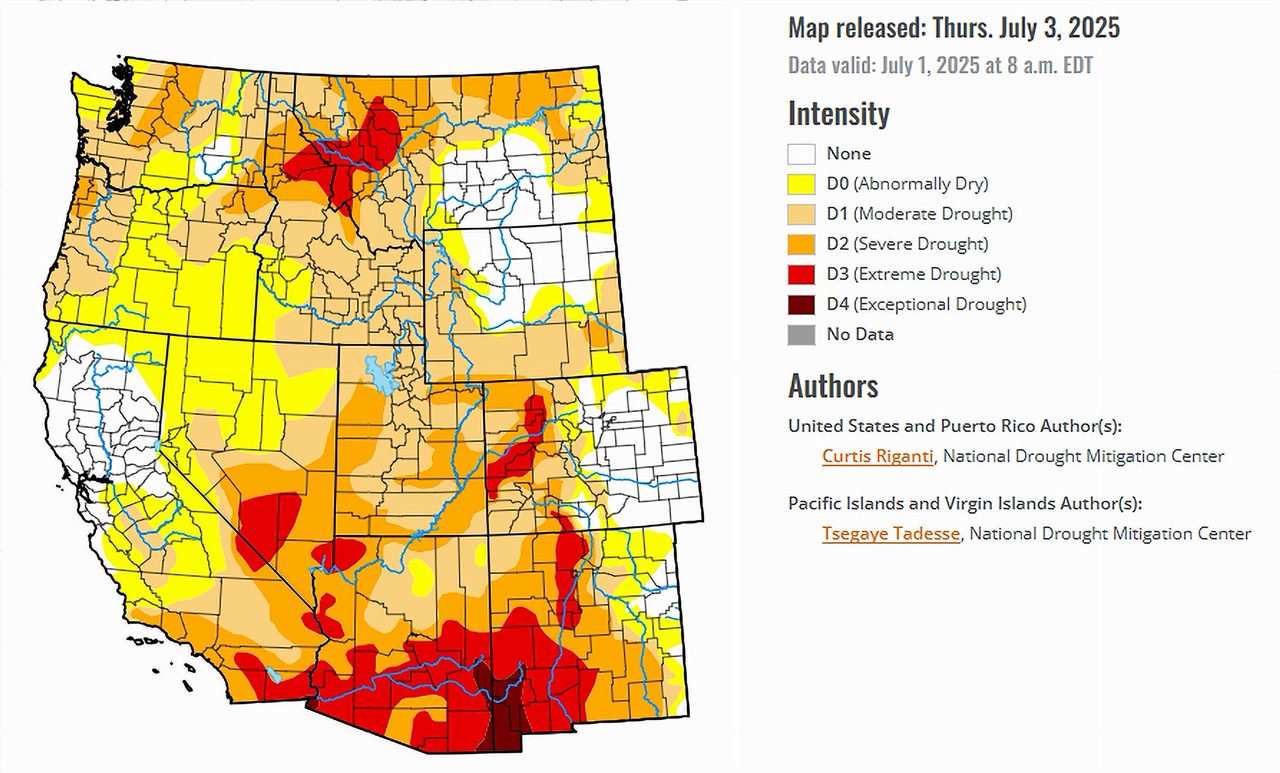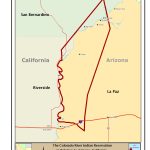- Dry weather west of the Continental Divide worsened drought in Utah and Wyoming.
- Arizona and New Mexico saw partial drought relief from active monsoon rains.
- Nevada and California remain locked in long-term dryness with little change.
- Severe to extreme drought expanded across northern Utah and western Wyoming.
Saturday, July 5, 2025 — The U.S. Drought Monitor released on July 3, 2025 , shows a mixed picture for the Colorado River Basin states. While monsoonal rains offered relief in parts of Arizona and New Mexico, much of the region west of the Continental Divide remained dry, intensifying drought conditions in Utah, Nevada, and Wyoming.
, shows a mixed picture for the Colorado River Basin states. While monsoonal rains offered relief in parts of Arizona and New Mexico, much of the region west of the Continental Divide remained dry, intensifying drought conditions in Utah, Nevada, and Wyoming.
Across the United States, the past week brought heavy rains to parts of the central Great Plains and Upper Midwest, helping to alleviate drought in some regions. However, the West largely missed out, with widespread dryness and warmer-than-average temperatures contributing to growing water stress.
Arizona and New Mexico: Monsoon Offers Limited Relief.
The most significant rainfall in the Colorado River Basin occurred in New Mexico, where monsoon activity brought localized totals exceeding 2 inches—and in some areas more than 5 inches. These rains helped improve soil moisture and reduced drought severity in southeastern, southwestern, and north-central parts of the state.
In Arizona, rainfall was more limited. The drought monitor reported that “exceptional drought expanded slightly along part of the Arizona–New Mexico state line where deficits in groundwater and precipitation continued to mount.” While southern Arizona may benefit from upcoming monsoon activity, parts of northern Arizona remain persistently dry.
Utah and Wyoming: Dryness Worsens Across the Board.
Utah experienced widespread deterioration of drought conditions, particularly in its central and northern regions. The report cited “very low streamflows and large short-term precipitation deficits” as factors driving the expansion of both severe and extreme drought.
Western Wyoming also experienced significant degradation. “Degradations occurred in northwest Colorado and western Wyoming, where soil moisture and streamflow deficits mounted amid growing precipitation deficits,” the report noted. Areas west of the Continental Divide in Wyoming received little to no rainfall.
Colorado: East vs. West Divide.
Colorado displayed stark contrasts this week. South-central and northeast parts of the state received rain totals in the 1–3 inch range, leading to localized improvements in soil moisture. However, western Colorado remained dry, contributing to growing drought concerns along the state’s western slope.
Nevada and California: Continued Dry Spell.
Nevada saw little to no rainfall during the monitoring period, and conditions remained largely unchanged. Persistent dryness and elevated temperatures continued to stress vegetation and water resources, particularly in the southern half of the state.
California, especially its inland desert and southeastern regions, also remained parched. The report showed no meaningful improvements, with many areas still experiencing long-term drought and abnormal dryness. Streamflow and groundwater levels remained low.
Warmer and Drier Conditions in the Forecast.
The National Weather Service’s Climate Prediction Center predicts warmer-than-normal temperatures from July 8–12 across most of the western United States, especially west of the Continental Divide. Below-normal precipitation is expected in northern Arizona, Utah, Nevada, southern Idaho, and much of Oregon. This pattern may worsen drought conditions in those areas unless future monsoonal activity intensifies.
Meanwhile, southern Arizona and southern New Mexico may see slightly above-normal precipitation, potentially offering some relief in areas that have already benefited from early monsoon rains.


